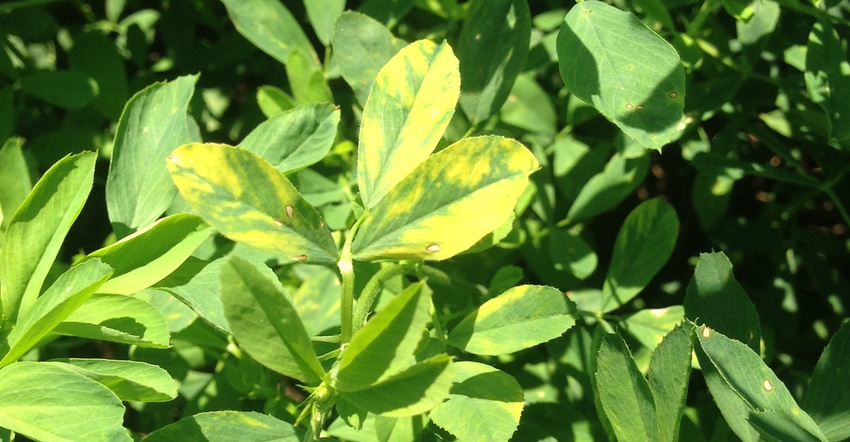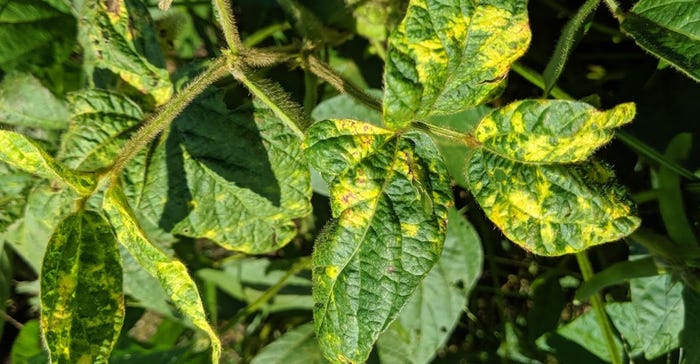
Farmers should be on the lookout for alfalfa mosaic virus in more than just their alfalfa, as this pest-transmitted virus can also infect soybean plants.
Connie Strunk says AMV is most commonly transmitted by three aphid species: pea aphid, blue alfalfa aphid and the spotted alfalfa aphid, with the pea aphid most abundant in South Dakota. Strunk is a plant pathology field specialist at the South Dakota State University Extension regional center in Sioux Falls.
AMV overwinters in alfalfa plant crowns, and a common sign is a yellow and green mosaic pattern on alfalfa leaves, though symptoms can differ with the age of the plant and weather conditions.
“Cool and wet conditions make it a little more ideal for some of those aphids to move around and make the transmissions,” Strunk says. “You will see symptoms develop really early in the season, especially during a cool, wet spring. Most of the time if they happen really early, those infections transmitted could’ve taken place in the fall.”
Alfalfa plants infected with AMV have reduced vigor, and over time that can lead to some stand decline, she says.
 AVOID MISDIAGNOSIS IN BEANS: The symptoms of AMV can be confused with a genetic abnormality in soybeans.
AVOID MISDIAGNOSIS IN BEANS: The symptoms of AMV can be confused with a genetic abnormality in soybeans.

According to Strunk, yield loss in soybeans would be negligible as AMV does not kill the plant and rarely do viruses kill plants. She adds that viral titer is highest in the newest, or youngest, tissues and will show the most symptoms. Once infected with a virus, the plant will always have the viral infection. But as the plant ages, the symptoms may not be as pronounced. Genetic abnormality can be confused with AMV in soybeans.
AMV management
Strunk says a rule of thumb is that there are no rescue treatments for viruses. “So once those alfalfa plants have those AMV symptoms, you’re not able to fix that plant or make it go away.”
What farmers can do is look at seeding a new stand of alfalfa and selecting a cultivar that is resistant to AMV.
Whether farmers wish to maintain the current stand or establish a new one, Strunk stresses the importance of controlling broadleaf weeds in alfalfa fields, especially black nightshade. “That is found to be a host for the alfalfa mosaic virus, especially if you have soybeans in the area.”
With no treatment for AMV, Strunk suggests that farmers be diligent to scout closely for those aphid populations and manage them early to prevent additional spread of AMV within the field.
About the Author(s)
You May Also Like






